21 F. high in the Twin Cities Thursday.
26 F. average high on December 18.
37 F. high on December 18, 2013.
1" snow on the ground at KMSP.
December 18, 1983:
Record lows were set across central Minnesota with temperatures ranging
from fifty degrees below zero to the upper twenties below zero. Mora
set their record with a low of 52 below, with 42 below at Little Falls,
41 below at Jordan, St. Cloud, and Cambridge, and 39 below at Long
Prairie, Milaca, and Stillwater.
December 18, 1922: Heat wave across Minnesota. Temperatures climb into the 60's at New Ulm.
Icy Paranoia
When
I talk to older Minnesotans it's not the snow or biting wind chill that
makes them nervous. It's ice. Falling on ice can spark debilitating
injuries for young and old alike; hitting your head on icy ground can
trigger concussion, even death.
According to the Centers for
Disease Control and Prevention an older American is treated in a
hospital emergency room for injuries related to a fall every 15 seconds.
Falls are the leading cause of injury for adults older than 65,
accounting for 95 percent of hip fractures. Every winter 1 in 3
Americans over the age of 65 will fall down.
Why do some
Minnesotans become snowbirds and flee south for the winter? It probably
has more to do with fear of ice than fear of the cold. Adequate
footwear, exercises to maintain balance, and monitoring any medications
that might spark dizziness can help lower the overall risk.
A
weekend thaw melts much of the ice out there right now. A coating of
snow is possible before Christmas, but this year Santa may show up in a
red SUV.
A touch of arctic air is on tap for late December and early January, but the pattern appears "progressive".
Translation: no sign of subzero air stalling for weeks on end.
* Photo credit: Steve Burns.
Falls Common Cause of Serious Injury, Death Among Elderly. Some of the CDC stats referenced in today's column were from a recent article at
Bangor Daily News; here's an excerpt: "...
CDC
statistics show that each year, one in every three adults age 65 and
older falls. Falls can cause moderate to severe injuries, including hip
fractures and head injuries, and can increase the risk of early death.
In 2010, 2.3 million nonfatal fall injuries among older adults were
treated in emergency departments and more than 662,000 of those treated
required hospitalization. Public health statistics show that 20,400
older adults died in 2009 nationwide from fall injuries, with deaths
among men 34 percent higher than deaths among women..."
Nagging Snow Drought.
Snow lovers aren't terribly pleased with the state of our winter. After
a promisingly cold and snowy start in November the mid-December thaw, 3
days in a row at or above 50F, has put a major dent in snowcover
amounts. Thursday morning estimated snow reports courtesy of NOAA.
I'll Be Home For Christmas - Maybe.
ECMWF (European) guidance shows a major east coast storm, another
nor'easter spreading soaking rains into the Mid Atlantic and New England
next Wednesday, changing over to snow over central Pennsylvania and New
York State. Midday Christmas Eve map courtesy of WSI.
CryoSat Records Small Decrease in Arctic Ice Volume. Here's an excerpt from an update at
Gizmag: "...
Long-term
satellite records show that Arctic ice volume fluctuates from season to
season, but details a consistent downward trend throughout the year.
The new CryoSat measurements, which were recorded in October and
November 2014, show a 6.4 percent decrease in the volume of arctic sea
ice, with 10,200 cubic km (6,338 cubic miles) now remaining..."
Persistent Warming Driving Big Arctic Changes.
The Arctic is warming twice as fast as mid latitudes, and this is
impacting not only the rate of ice loss but the configuration and speed
of jet stream winds blowing high overhead. Here's an excerpt from an
update at
Climate Central: "...
One of those areas of importance is understanding if the drop in sea ice and rising temperatures are also steering extreme weather
toward the continental U.S. and other parts of the lower latitudes.
Some research has tied the rapid changes in the Arctic, known as Arctic
amplification, to creating a wavier jet stream
that can stall weather patterns. Jim Overland, a scientist at the
National Oceanic and Atmospheric Administration, said a wavy jet stream
has been in place at times for each of the past five winters and the
potential for an Arctic connection is there, but the jury is still out
on directly attributing it to warming in the Arctic..."
2014 Will Be The Hottest Year On Record. This news comes from Dr. John Abraham, a climate scientist at St. Thomas, via a story at
The Guardian. Here's the intro: "
For
those of us fixated on whether 2014 will be the hottest year on record,
the results are in. At least, we know enough that we can make the call.
According the global data from NOAA,
2014 will be the hottest year ever recorded. I can make this
pronouncement even before the end of the year because each month, I
collect daily global average temperatures. So far, December is running
about 0.5°C above the average..."
Denmark Has Its Hottest Year On Record.
The Local has the story - here's a clip: "
Although
it is not quite over yet, 2014 has secured itself a place in the record
books as both the hottest year in recorded Danish history and the first
year ever to end with an average temperature in the double digits.
According to meteorology institute DMI, 2014’s average temperature will
end at 10.0C. The record heat is “unthinkable without climate change",
DMI spokeswoman Katrine Krogh Andersen said..."
Hotter Ocean Waters Give Typhoons A Boost.
Scientific American has the story - here's an excerpt: "
Also
rare for the Atlantic would be the five Category 5-strength storms that
have spun up in the West Pacific this year, the most in that basin
since the 10 seen in 1997, according to Steven Bowen, an associate
director and meteorologist with the reinsurance group Aon Benfield.
The record for Category 5 storms in a single season in the Atlantic is
only four, which has only happened once, during the blockbuster 2005
season. The West Pacific, on the other hand, has averaged about three
Category 5 storms a season since 2000, Bowen said..."
Drones Might Help Explain How Tornadoes Form.
If, that is, you can prevent the drones from being battered by large
hail, there may be something here to further the science of
tornadogenesis. Here's an excerpt from
CBS Denver: "...
Scientists
have no other way to get instruments deep inside a storm. Drones can
take measurements at any altitude up to about 2,500 feet — higher than
measurements by ground stations and storm-chasing vehicles, said Adam
Houston of the University of Nebraska-Lincoln, co-director of the
research group. They can also measure wind below 300 feet, lower than
radar can reach. Drones can cover more territory than a ground-based
storm chaser, and they don’t need an airport to take off or land. A
drone can fly into the strong winds, downdrafts, rain and hail of a
powerful storm without putting a human pilot in danger..."
NASA Analysis: 11 Trillion Gallons To Replenish California Drought Losses.
NASA has the story; here's an excerpt: "
It
will take about 11 trillion gallons of water (42 cubic kilometers) --
around 1.5 times the maximum volume of the largest U.S. reservoir -- to
recover from California's continuing drought, according to a new
analysis of NASA satellite data. The finding was part of a sobering
update on the state's drought made possible by space and airborne
measurements and presented by NASA scientists Dec. 16 at the American
Geophysical Union meeting in San Francisco..."
Graphic credit above: "
NASA
GRACE satellite data reveal the severity of California’s drought on
water resources across the state. This map shows the trend in water
storage between September 2011 and September 2014." Image Credit: NASA JPL.
Cuomo To Ban Fracking As Health Officials Call It Unsafe. Here's the introduction to a story at
Bloomberg: "
The New York state Health Department said fracking for natural gas can’t be done safely, dooming prospects that Governor Andrew Cuomo will end a six-year moratorium. Acting Health Commissioner Howard Zucker said at a cabinet meeting in Albany
today that studies on the extraction technique’s effects on water, air
and soil are inconsistent, incomplete and raise too many “red flags” to
allow..."
Why Media Shouldn't Glorify Pennsylvania's Fracking Industry.
Media Matters takes a fair and balanced look at the pros and cons of fracking; here's an excerpt: "...
But
Pennsylvania may actually be more of a testament to why New York's
health concerns surrounding fracking are warranted. Oil and gas
operations have damaged Pennsylvania's water supply over 200 times
since 2007, according to an investigation by the Pittsburgh
Post-Gazette, and a recent report from the Government Accountability
Office found that the state's drinking water is at risk from poor wastewater disposal practices. One Pennsylvania town, Dimock, has been dubbed "Ground Zero"
in the battle over fracking's safety by NPR. The town has seen
particularly high rates of water contamination, with a methane leak
causing a resident's backyard water well to explode, tossing aside a
concrete slab weighing several thousand pounds in one instance..."
Christmas Lights Can Be Seen From Space By NASA Satellites. Good news for Santa. Here's an excerpt from
Huffington Post: "
It's
not just your neighbors who can see your Christmas lights. The combined
effect of holiday lights in cities and suburbs is so powerful that the
difference from normal lighting conditions can be detected from space.
NASA reports that satellite images show certain cities shine between 20
percent and 30 percent brighter during the holiday season. And out in
the suburbs, some areas shine as much as 50 percent brighter..."
How To Be A Survivor: Flu Season 2014-2015. An article at
Huffington Post has some good reminders of steps you can take to lower the risk this winter; here's the intro: "
Each
year, many myths and misconceptions circulate about "flu shots." People
tend to have a variety of opinions about whether they are worthwhile
and whether they actually make a difference in terms of protection
against the flu. One reason for this is that the effectiveness of the
flu vaccine can vary from season to season. Additionally, there are a
number of factors that contribute to the likelihood that the flu vaccine
will protect from the flu..."
The Top 10 Things You Can't Have for Christmas 2014. Check out
Gizmag's list of decadent options, including a hurricane-proof tent that will make you the envy of your peers during the next BWCA camping trip: "...
While
it may amount to spare change compared to many of the other items on
this list, €4,999.00 (US$6,730) still seems like quite an outlay for a
tent. Designed specifically for the Red Bull Storm Chase windsurfing
competition, Heimplanet's 10-person Mavericks geodesic inflatable expedition tent
can cop winds of up to 112 mph (180 km/h) while campers dance about
(read huddle with fear) in its spacious 142 sq ft (13 sq m) interior..."
TODAY: Mostly cloudy, a bit milder. Winds: SE 5-10. High: 32
FRIDAY NIGHT: Cloudy, not as cold. Low: 29
SATURDAY: Thawing out. Clouds and fog linger. High: 34
SUNDAY: Clouds, fog, drizzle possible. Wake-up: 31. High: 36
MONDAY: Mix changes to wet snow. Slushy? Wake-up: 32. High: 37
TUESDAY: Light snow tapers. Coating possible. Wake-up: 31. High: 33
CHRISTMAS EVE: Colder wind, few flurries. Wake-up: 27. High: 29
CHRISTMAS DAY: Cloudy Christmas Day, chilly. Wake-up: 22. High: 27
Climate Stories....
Sea Change: The Pacific's Perilous Turn. In case you missed the award-winning series on ocean acidification at
The Seattle Times; here's an excerpt of a sobering, in-depth look at what's happening to the world's oceans: "...
Imagine every person on Earth tossing a hunk of CO2
as heavy as a bowling ball into the sea. That’s what we do to the
oceans every day. Burning fossil fuels, such as coal, oil and natural
gas, belches carbon dioxide into the air. But a quarter of that CO2 then gets absorbed by the seas — eight pounds per person per day, about 20 trillion pounds a year..."
The Snow Whisperer.
What will winters in the Northeast be like 30 years from now - will
there still be a viable ski industry? Here's an excerpt of an interview
at
Powder Magazine: "...
Because
of the inertia of the climate system and the long atmospheric residence
time for carbon dioxide, we are committed to warmer winters across the
U.S. Northeast over the next 30 years. Overall, average winter
temperatures will warm by 2 to 4 degrees Fahrenheit, there will be fewer
cold days and fewer days with snow on the ground, and reduced annual
snowfall. And more winter precipitation will likely fall as rain..."
Opinion: GOP Senators: Climate Skeptics? Or Deniers? No, Big Oil Lobbyists.
Rule #1: don't bite the hand that feeds, right? Flushing all that
campaign cash into Washington D.C. has a way of changing how you feel,
even about basic science, data and facts on the ground. Here's an
excerpt of an Op-Ed from
MarketWatch: "...
Yes,
Big Oil is big business in Big Jim’s Big Oklahoma. So no surprise
Inhofe wrote the bible on the subject a couple years ago: “The Greatest
Hoax: How the Global Warming Conspiracy Threatens Your Future.” Yes,
that’s effectively the GOP election platform. So why even question
Inhofe’s motivation? Old news. A ClimateProgress reviewer of “The
Greatest Hoax” noted that over the years Inhofe’s received “$1,352,523
in campaign contributions from the oil and gas industry, including
$90,950 from Koch Industries.” And in the 2012 elections, 90% of the
entire industry’s donations went to GOP candidates..."
The High Price of Cheap Oil. Great news for commuters short term, but the longer-term implications aren't necessarily so good, according to a story at
The Christian Science Monitor; here's an excerpt: "...
But,
low oil prices will make it even harder to secure future oil supplies.
The oil industry was already cutting back its exploration budgets before
the price plunge. The industry said that there were not enough
profitable prospects available even at $100 per barrel. What happens to
industry exploration and development budgets with oil prices now around
$60? Without exploration there can be no new production; and without new
production, oil supply falls automatically..."
Climate Change Driving Fish North, Rutgers Research Shows. Here's a clip from a story at
NJ.com: "...
Last week, the Rutgers team released data and charts to the public showing more than 60 species and how they migrated over the last 40 years.
The average drift northward is 0.7 of a degree latitude, and 15 meters
deeper in the water, Pinsky's work found. "We’re seeing a trend of many
species shifting northward and shifting deeper," said Malin Pinsky, a
marine biologist leading the Rutgers team. “It is a sea change – and it
affects fisheries quite a bit...”
 Research Eyes Global Warming - Extreme Weather Links.
Research Eyes Global Warming - Extreme Weather Links. Here's a clip from a story at
Summit County Citizens Voice: "...
But
decision makers need to appreciate the influence of global warming on
extreme climate and weather events. “If we look over the last decade in
the United States, there have been more than 70 events that have each
caused at least $1 billion in damage, and a number of those have been
considerably more costly,” said Diffenbaugh. “Understanding whether the
probability of those high-impact events has changed can help us to plan
for future extreme events, and to value the costs and benefits of
avoiding future global warming.”
These Cities Might Be Seeing More Power Outages, Thanks To Climate Change.
Warm up the air, warm up the oceans and you wind up with more intense
storms with stronger winds capable of bringing down portions of the
power grid. Here's a recap of recent research published at
Climate Change, highlighted in an article at
Huffington Post: "
How
likely is it that climate change will leave your city in the dark?
Researchers at Johns Hopkins University asked just this question,
analyzing which cities will be more likely to suffer from
hurricane-related power outages in the future. Using historical data and
a range of potential future storm scenarios, researchers created a
computer model to predict which cities will likely see the greatest
increases in power outage risk. Seth Guikema, associate professor at
Johns Hopkins and co-author of the report, said in a press release that the information will be able to help cities make plans now to reinforce their systems..." (File photo: AP).
 Most Americans Are Clueless About How Climate Change Will Affect Their Health
Most Americans Are Clueless About How Climate Change Will Affect Their Health. Here's a snippet from a
Grist article that made me do a double-take: "...
Even
many respondents who recognized that climate change poses health
threats didn’t understand which threats were likely to affect American
communities in the next 10 years. For example:
- Allergies? Correct answer: yes. Percent who said yes: 38%
- Asthma? Correct answer: yes. Percent who said yes: 37%
- Heat stroke? Correct answer: yes. Percent who said yes: 36%
- The flu? Correct answer: no. Percent who said yes: 29%
- Depression? Correct answer: yes. Percent who said yes: 26%
- Ebola? Correct answer: no. Percent who said yes: 22%




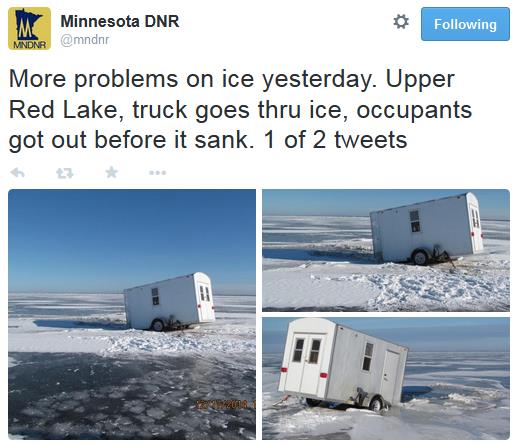



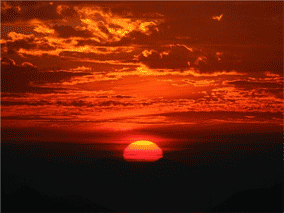

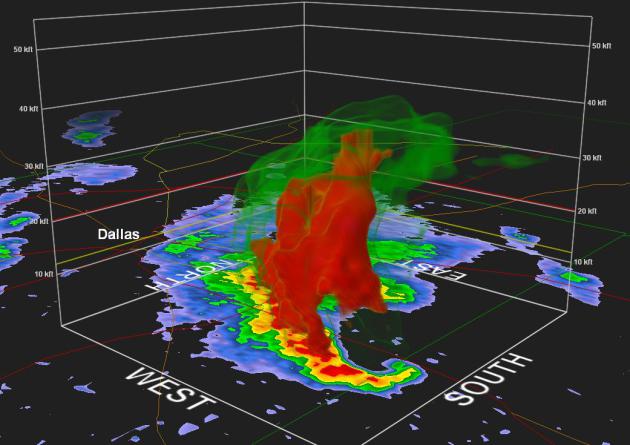





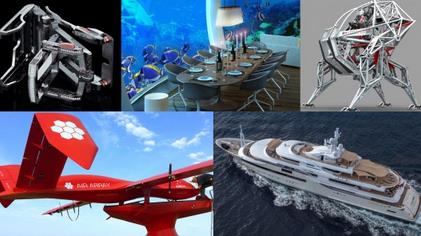





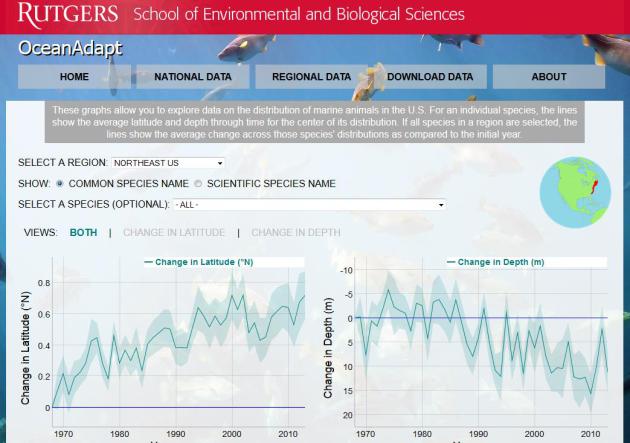
.jpg)

.jpg)
No comments:
Post a Comment